France
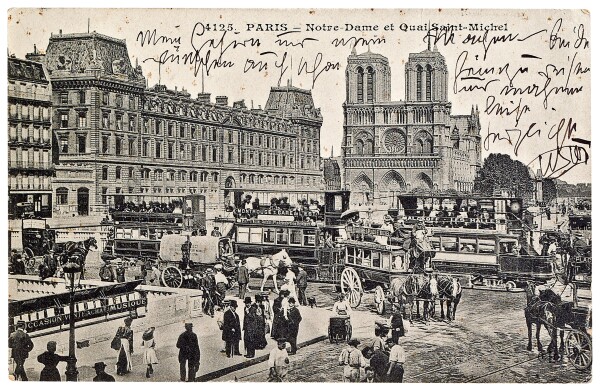
Gustav Klimt: Picture postcard from Gustav Klimt in Paris to Emilie Flöge in Vienna, 11/02/1909, Leopold Privatsammlung
© Leopold Museum, Vienna
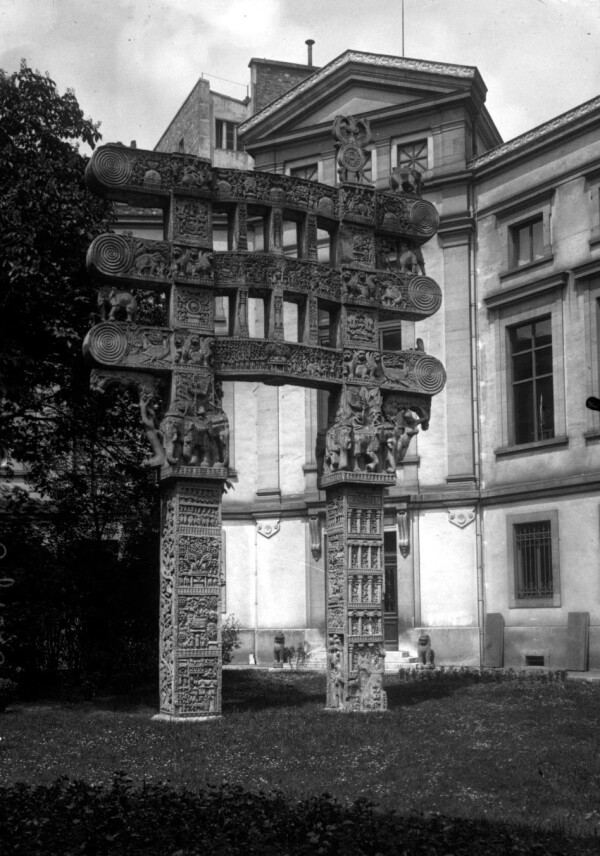
Musée Guimet in Paris with Tibetan archway, 1908, Bibliothèque nationale de France, Paris
© gallica.bnf.fr / Bibliothèque nationale de France
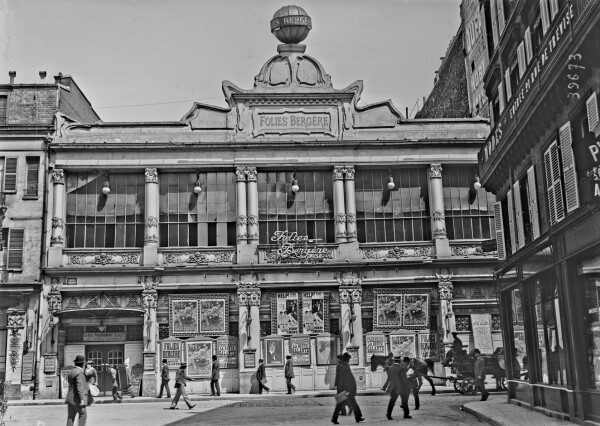
Les Folies Bergère in Paris, 1914, Bibliothèque national de France, Paris
© gallica.bnf.fr / Bibliothèque nationale de France
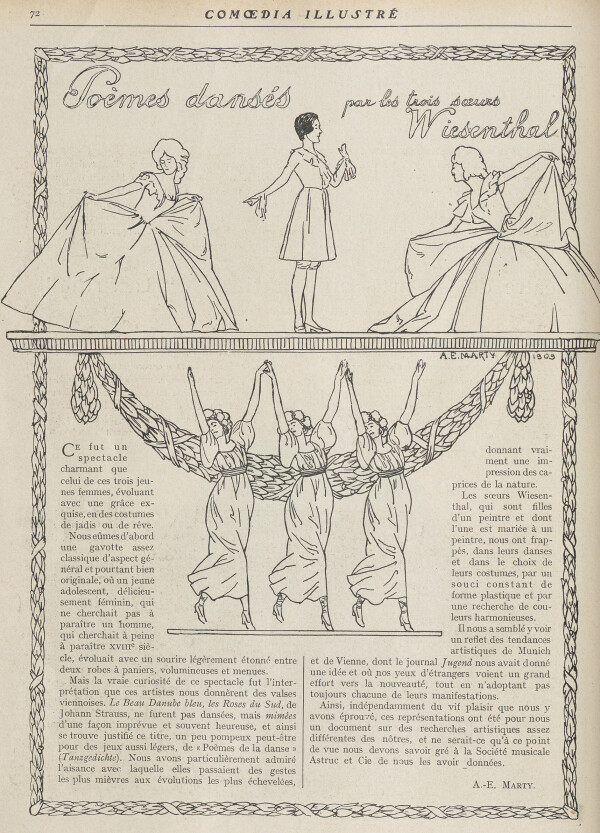
Sisters Wiesenthal at the Vaudeville Theater, Paris, in: Comedia illustré. journal artistique bi-mensuel, 2. Jg., Nummer 3 (1909).
© gallica.bnf.fr / Bibliothèque nationale de France
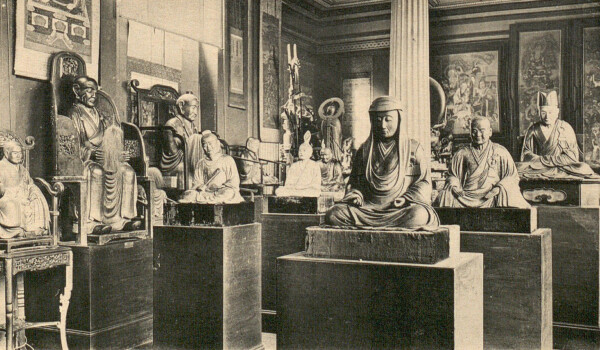
Musée Guimet, Japanese Collection, Bibliothèque nationale de France, Paris
© gallica.bnf.fr / Bibliothèque nationale de France
Gustav Klimt traveled to the French capital Paris in the autumn of 1909 together with his fellow artist and close friend Carl Moll. They visited various museums as well as private art collections. Research on Klimt suggests that the impressions the artist received during this trip were partly responsible for his stylistic transformation from 1910.
Judging from his correspondence, Gustav Klimt only took a single trip to France. His works had been shown already at the World’s Fair in Paris (1900), but Klimt did not attend this exhibition.
Together with his closest confidante, Emilie Flöge, Klimt took French lessons for several years, though it appears that he was not a particularly talented student. Years later, he would say about himself during a trip to Brussels: “It pains me a great deal that I cannot speak French properly.” Perhaps this was one of the reasons why he never accompanied Emilie, who ran her own fashion salon “Schwestern Flöge,” on one of her frequent trips to the fashion capital Paris.
In 1909, Klimt visited the French capital in the company of his friend and fellow painter Carl Moll. They arrived in Paris on 17 October, and chose to stay at the Grand Hotel for its central location. Owing to the numerous picture postcards and letters Klimt sent to Emilie Flöge, the itinerary of this journey can be easily reconstructed. During the day, Klimt and Moll completed a veritable marathon of museum visits, while the evening was spent at various nightclubs in search of “beautiful, elegant Parisian women.” The next day, Moll already left for Spain, where Klimt would join him a short while later. Klimt spent the rest of his stay in Paris with the Swiss art historian Hugo von Tschudi, who was spending his study trip in the capital and provided the artist access to several private galleries. He was further accompanied by Bertold Frischauer, an Austrian journalist doing field work, who helped him get a new passport for his onward journey to Spain. The German painter Eugen Spiro, a friend of Moll’s who lived in Paris, joined Klimt on his explorations of the Paris nightlife.
During his stay in Paris, Klimt visited the Louvre as well as the collection of applied arts housed there, the Musée des Arts decoratifs, the Musée du Luxembourg, the Musée Guimet (now Musée national des Arts asiatiques Guimet), as well as a private gallery showing paintings by French Impressionists, including Cézanne and Manet. A letter Klimt wrote to Emilie Flöge on 22 October gives an intimation of just how busy his schedule was:
“I am about to lose my mind from pacing up and down all these collections – and yet we are continuing – for as long as we can.”
Unfortunately, Klimt did not give much indication as to what he thought about the works he saw. It seems he was especially taken with the Impressionists: “Cezanne – Manet – very beautiful!” He further called the Asian collection of the Musée Guimet “very interesting,” which is hardly surprising given that Klimt himself was an avid collector of Asian art. Klimt expressed similar interest in the Paris air show, which was held on 19 October as part of the opening of the “Exposition Internationale de la Locomotion Aérienne.”
In addition to several visits to the theater and nightclubs, including the famous Les Folies Bergère, Klimt also attended the dress rehearsal of the “Schwestern Wiesenthal” on 23 October. The three Austrian dancers Grete, Elsa and Berta Wiesenthal had been invited to make guest appearances at the Théâtre du Vaudeville, and apparently stayed at the same hotel as Klimt: “The Wiesenthals are running around in the hotel.” Klimt had likely known the sisters latest since 1907, as it is believed he immortalized two of them in his painting Friends I (Sisters) (1907, Klimt-Foundation, Vienna).
On 24 October, Klimt followed Carl Moll to Spain, where they stayed until 1 November. The two artists then returned to Paris, but this time they were only passing through, leaving for Vienna the following day.
After-Effects in Klimt’s Oeuvre
Upon Gustav Klimt’s return from his stays in Paris and Spain, we can see a stylistic transformation in his oeuvre. Though Klimt had had the chance to study the works of the French Impressionists and Fauvists already a few years previously at the exhibitions of the Vienna Secession, the extent of his exposure to these styles was far greater in Paris. This intense encounter was likely the reason why Klimt’s brushwork became increasingly open and expressive after 1900. Moreover, he made more frequent allusions to objects of Asian art in his paintings. Inspired by Primitivism, which was popular in Paris, he incorporated objects from his own collection, as well as examples of Asian art he had seen at the Musée Guimet, into his compositions. While Klimt had been familiar with movements of modern French art already before his trip to France, the concentrated impressions he received on this art tour had a lasting impact on his late oeuvre.
Literature and sources
- Christian M. Nebehay: Gustav Klimt. Von der Zeichnung zum Bild, Vienna 1992, S. 253.
- Sandra Tretter, Peter Weinhäupl (Hg.): Gustav Klimt. Emilie Flöge. Reform der Mode. Inspiration der Kunst, Vienna 2016, S. 58.
- Tobias G. Natter, Franz Smola, Peter Weinhäupl (Hg.): Klimt persönlich. Bilder – Briefe – Einblicke, Ausst.-Kat., Leopold Museum (Vienna), 24.02.2012–27.08.2012, Vienna 2012, S. 25-26, S. 33-36, S. 337-357, S. 364-365.
- Ausstellungskatalog »Die Entwicklung des Impressionismus in Malerei und Plastik«. www.secession.nyarc.org/items/show/46 (04/06/2020).

